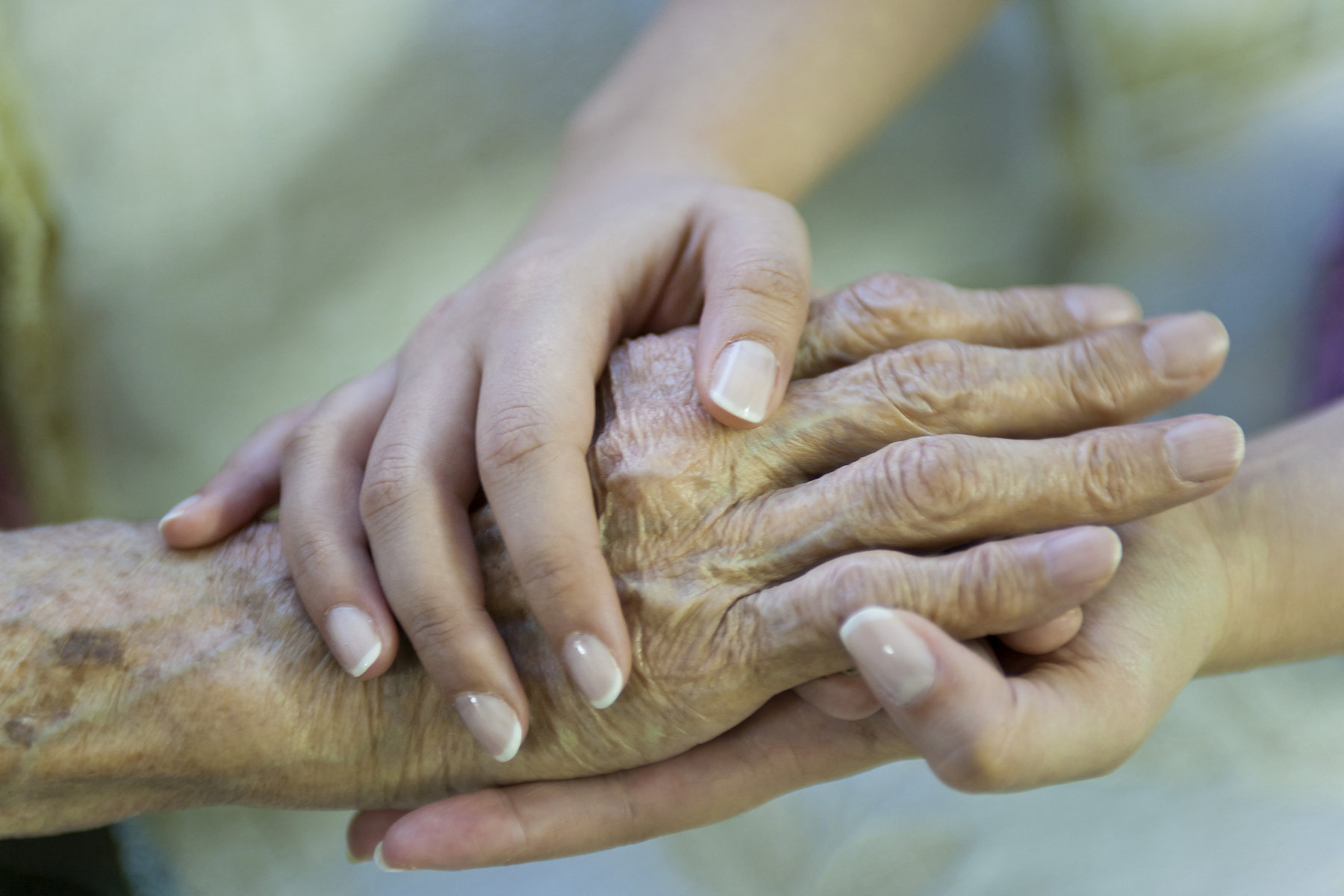Different Ways to Limit the Use of Smartphones in Teenagers
Electronic devices are very useful tools that have become an intrinsic part of our lives today. Used in the right way they become an added value and in the wrong way they become a hindrance.
The first thing we need to understand is the extent of the importance of these devices in our lives. As professional adults, we have integrated them into our daily lives as an indispensable tool to work, socialize, book events, pay, play sports, entertain ourselves, organize our agendas and an infinite etcetera.
Taking this into account, why do we expect that for teenagers this is different? The use of electronic devices is as necessary for the proper functioning of different areas of their lives as it is for adults, arguably even more so, considering the omnipresent role technology has come to play in education in the last couple of years. We know that there are both advantages and disadvantages to the use of these devices and yet, when we see a teenager with a SmartPhone we seem to only remember the latter.
Perhaps this is because we are more afraid of the possible adverse effects than the possible benefits. We know that on the one hand the correct use of electronic devices can help in socialization, create new ways of learning, increase problem-solving skills and frustration tolerance (video games), enable creativity and freedom of expression, and allow unlimited access to information. But on the other hand, technology abuse among young people can lead to addiction and isolation, higher levels of anxiety, behavioral disorders, poor school performance, depression, stress and lack of interest in their surroundings.
The important thing to recognize here is the difference between the causes behind the advantages and disadvantages. The advantages associated with the use of electronic devices appear with their correct use, and the disadvantages appear when there is an abuse. It is misuse and abuse, therefore, that we must avoid.
Tips
If you’re concerned about excessive use by your teen, you can take action following these advices:
- Create a family compromise, with space and time rules that you all must abide by. For example, you cannot use the cell phone before 9 a.m. or after 10 p.m.; it is important to propose interesting and fun alternatives to do together such as watching a movie as a family, playing a game, creating something together such as a model or puzzle or sharing any activity that is interesting for them such as learning to play an instrument. With that we will get them to see it not as a restriction but as a change.
- Let them know the advantages of not being always available, of a complete digital disconnection from time to time. You can plan one or two days a month when they will do a new and rewarding activity away from home (an excursion, a concert, a spa day, a culinary event…).
- Support them in using apps that expose them to getting outside. If they like to do sports, there are many options that make it easier to do it outdoors, including an app, Caminandum, that helps you find people who practice the same sport or activity to do it together or lend each other equipment.
- Use educational apps with them to learn together, for example a new language. There are free apps like Memrise and Duolingo that allow you to learn while playing, or paid apps like babbel that are more complete at an academic level. Teach them that they can use the devices to satisfy their curiosity and learn something new about a topic, introducing the question of the veracity of sources and making sure your children are prepared to recognize fake news.
- Participate in your children’s online activities. If you play online games together or show interest in their favorite group they follow on social networks, they will become shared hobbies. This way, you will have more control over the time spent on these activities.
- Explain to them the differences in smartphone use and all that it offers in an understanding way. We want them to understand how to properly use the devices so they can fend for themselves, not impose our own judgment.
- Be an example for them, engaging all adult family members to be one as well. If we ourselves are hooked to the cell phone or tablet whenever we have a free minute, we are validating a wrong behavior. On the contrary, we can teach them how responsible use looks like, sharing with them the utilities that we take out in the day to day. Parents remain the most important role model in a teenager’s life.
- Make sure you have a way to estimate the number of hours your kids spend online realistically .Android, for example, has a «Digital Wellness» feature that tells you how many times you unlock your phone and how much time you spend on each app. Sometimes looking at the stats helps you realize the problem, and reflecting this back to them in a sympathetic way can lead them to decrease exposure on their own.
- Try not to go to extremes, such as blocking your kids’ internet or taking away their devices abruptly; you’ll make it even more desirable.
There is only one valid slogan for the use of these devices, and that is equilibrium. To achieve a digital well-being, knowing which devices or applications to use at what time and when to stop. It’s not just the time in front of the screen that matters, but the quality of what they are watching, which means that if we can’t significantly reduce the time they spend in front of the screen, we can make sure they take advantage of these devices in the same way we do.
To summarize:
To limit the use of electronic devices in teens we need to help them find the balance that they themselves fail to achieve. As parents, you can:
- Share time online by taking an interest in what they are interested in.
- Propose family digital wellness and viable, healthy and fun alternatives.
- Be a role model, an example of good use of electronic devices.
- Explain in an understanding way the differences between use and abuse
- Make sure they understand when use is excessive, teach them statistics
- Help them satisfy their need to explore and their curiosity in an adaptive way.
In this new technological age, we are presented with a million possibilities and therefore a million decisions on a daily basis. We have in our hands devices that allow us permanent accessibility; it is up to us to turn them into a helpful tool or a handicap. This is the idea that we must convey to teenagers.
For more information on prevention, differences between use, abuse and addiction, risk and protective factors, and guidelines for appropriate use, the Universidad Complutense de Madrid has prepared a Guide for parents and educators on the safe use of the Internet, cell phones and video games.
Available at the following link:
Sinews MTI
Psychology, Psychiatry and Speech Therapy
What can we do if we are told that a family member has cancer?
Receiving news as serious as the illness of a family member is often an event with enormous destabilizing potential. This fact becomes even worse if we talk about cancer, since this disease carries with it an enormous stigma as it is socially considered a fatal condition, although in practice it is not always the case.
Many people, once the initial shock of the news has passed, then to ask themselves if there is something they can do for their family member, but many times the question arises of how a person can be helped in this situation at all.
As we discussed earlier in posts on this topic, talking about cancer in general is misleading, since this disease, depending on the location, size and health status of the patient can be as harmless as to have practically no complications (in cases of rapid detection and intervention), or as terminal as being inoperable and deadly.
In any case, many of the things we can do for people who suffer from this disease are the same regardless of the degree of severity of their condition, so we are going to make certain points and then mention special cases.
1) Understand what kind of help our family member needs: We all have a way in which we like to be comforted, some people need physical contact, it calms them and makes them feel better, but other don’t stand it and may feel uncomfortable with it. In the same way, there are people who appreciate regular interaction and being checked on to see how they are doing, and there are those who prefer to have their own space and time alone to manage the wave of emotions that comes with this type of news. Since we cannot read the minds of the people we live with, there is a little trick that almost always works: Ask!
Giving space to our familiar, and asking questions like: “is there anything I can do to help you?”, “Would you rather we talk about this often, or do you think it would be better for you to deal with this on your own?” “Would it make you feel better if we made plans more often?” are great ways to empower the person we speak to. We allow them to manage the interactions they have in the way that is easiest for them, and we also have the certainty that we are helping.
2) Be attentive to intense emotional reactions: It is very normal that after receiving news of this caliber, emotions can overtake the person who listens to them. The emotions that someone may feel can be really varied; sadness, shame, guilt for not having acted before, anxiety, fear, anger and many more. Sharing the burden of these emotions (always at the pace the affected person sets, as mentioned before) always makes them easier to manage. In addition, normalizing these types of emotional reactions and accompanying the person who suffers them is never a bad option.
3) Pay attention to distorted thoughts: When we suffer waves of intense negative emotions, they often bias our way of thinking and we can end up having thoughts that are somewhat dramatic, illogical and somewhat extreme. It is not uncommon to meet people who think that what happens to them is a punishment for something they did wrong, that their life no longer has meaning, or that others cannot help them at all. Helping patients eliminate these thoughts is the job of a psychologist, but sometimes simply being aware that they exist and are negatively affecting us helps reduce the effect they have on us.
In some cases, unfortunately, cancer is terminal, and although the previously mentioned shows of support are just as important, these cases have a particularities to them.
It is worth mentioning that in the face of death many times people re-evaluate their life and consider how it has gone, what they could have done differently, etc. This is a natural and desirable process, in which the accompaniment of a professional will always help.
Even so, there is an element that usually gives meaning to the last moments of the life of a person in the terminal phase, and it is the opportunity to say goodbye to their loved ones. Many people who die naturally do not have the opportunity to say goodbye to family and friends, and sometimes this is something that takes its toll to the point of complicating the grief of those close to them. However, expressing emotions, desires and affections while still can help both the sick and their families to move on and face the end in a less painful way.
There are always last wishes and actions to take, and it is at these times that patients have the option to do so.
Cancer is an increasingly studied and understood disease, and there are already many professionals in both oncology and mental health (psycho-oncology) who dedicate their lives to helping people who suffer from it. Accompaniment in these moments by qualified personnel can always be a relief that allows to lighten the burden of such a difficult moment for those who need it.
Sinews MTI
Psychology, Psychiatry and Speech Therapy
Intimate partner violence
Intimate partner violence (IPV) consists in any act of physical, sexual, emotional or financial violence exerted by one member of the couple in order to achieve total control over their partner.
It is considered one of the most widespread forms of violence against women, and according to Spain’s government, a 14.2% of the female population has suffered physical and/or sexual violence by an intimate partner. It is difficult to ascertain the real percentage of IPV cases, since the fear of retaliation, lack of support and stigma, hope that their partner would change, or lack of knowledge on how to get help, prevent people from reporting it. This is particularly frequent in cases of emotional abuse, where the violence is harder to see or prove.
What are the types of abuse committed during IPV?
We can organize violent behavior in four different categories, depending on the type of abusive act that is used to corner the person into submission.
- Physical abuse: This type of violent behavior is aimed at inflicting pain, fear and humiliation through the use of punches, kicks, burns, hair pulling, strangulation, shoves, or any other form of physical abuse. Other methods used by the abuser are threatening to kill or hurt with a weapon, destroying household items (punching walls or doors, hurling objects…), forcing to consume substances or alcohol, driving recklessly, abandoning the person in dangerous places to “teach them a lesson”, preventing the person from getting medical assistance, or not allowing the person to leave the house.
- Sexual violence: Any act consisting on forced sexual interactions, either through the use of direct physical force, threats or manipulation; or any non-consensual degrading sexual act performed during intercourse. Other forms of sexual abuse can be using demeaning sexual remarks in private or public settings; insisting on having sex even when the other person feels tired/sick; including a third party in a sexual interaction without consent; filming or photographing the person in sexual situations without their knowledge, or using the material to threaten and manipulate; or not considering the person’s feelings during sex.
- Emotional abuse: The use of verbal violence, shame, guilt, disdain, isolation and intimidation to undermine the person’s self-esteem and instil feelings of fear, insecurity and helplessness. This type of violence is the most difficult to prove and detect, but also the most widespread and insidious. The use of insults; the constant criticism or devaluation of the other person’s personality, physical appearance, hobbies, actions or abilities; spying the person’s physical movements or communication with other people; ridiculing the person in public or private settings; using the silent treatment or giving the cold shoulder to punish the person; gaslighting in order to disorient and confuse, make the other person believe they are crazy or minimize the abuse; isolating the person from their family/friends/loved ones by sabotaging relationships or the use of jealousy and distrust; threatening to hurt or kill loved ones, pets or oneself are other examples of psychological violence.
- Financial abuse: The use of income, savings or money to control and manipulate the person. The abuser will try to create a sense of total financial dependence in their partner through the control of the couple’s monetary resources; stealing from the other person, or using their money without their permission; impeding access to their salary or savings; or impairing the person from getting a job or education.
How can i tell if I am suffering from IPV?
Most of the time, abusive situations are hard to identify or detect; particularly if emotional abuse is playing a main role in the relationship, as it is usually subtle and hard to pinpoint. Another reason why we might not be fully aware it is happening to us, is the abuse always occurs gradually. Small painful acts that are easy to disregard are slowly normalized within the relationship, which eventually allows for more blatant forms of violence to occur unnoticed. Lastly, human beings tend to protect themselves from harmful or harsh realities. The person might minimize or deny the abuse is occurring in order to avoid the pain and shock of being aware the person they might love the most is knowingly tormenting them with the direct intention of subjugating and controling them.
In order to ascertain if we are being victims of any form of abuse or intimate partner violence, we can observe common behaviors of people who have been through this type of violence and compare them to our own. Victims often hide things from their partners in order to avoid an explosive fit of rage; they might avoid expressing a difference in opinion to their partner for fear of being ridiculed; be wary to contradict the other person to avoid a negative or violent reaction; they might have lost the confidence in their decision making, or the sense of control in their own actions and lives; they avoid to talk to or spend time with friends or family members for fear of their partner’s reaction of disapproval, jealousy or anger; accept to have sexual intercourse without wanting to in order to avoid conflict or tension; tolerate invasions of their privacy, such as the access to their devices and communications with other people; find themselves asking their partner’s permission (not opinion) to do things; be in constant fear of making any mistake that might spark their partner’s anger; suffer from feelings of worthlessness; feel unable to make decisions over their own life, the people they see, how they dress, or how they spend time.
Another way to identify if we are being subjected to IPV is identifying the psychological damage that it generates. The impact of sustained abusive behavior by a partner includes the destruction of one’s self-esteem, chronic stress, sleep and eating disturbances, substance or alcohol abuse, social isolation, apathy or depression, abrupt changes in mood, suicidal ideation and hopelessness, headaches or gastrointestinal problems, constant feelings of shame, guilt or insecurity, and the loss of trust in one’s ability to function as an adult.
How can I cope with the psychological impact of abuse?
One of the ways we can recover from the damage suffered in the context of intimate partner violence (after we have ensured our physical and emotional safety) is to receive counseling or support through psychotherapy. The main goal of treatment will processing the emotional trauma in order to understand, accept and leave it behind. However the restoration and bolstering of our self-esteem and self-confidence will also be a cornerstone of treatment; in addition to working on the symptoms derived from the abuse such as anxiety, depression or substance use.
Division of Psychology, Psychotherapy and Coaching
Psychologist
Adults and adolescents
Languages: English and Spanish
How to identify eating disorders in teenagers: 12 red flags!
Eating disorders are complicated illnesses that affect adolescents with increasing frequency. They are ranked as the 3rd most common chronic illness in adolescent female, with a dramatic increasing rate over the past three decades. The causes of eating disorders are broadly accepted to be a combination of several factors: genetic, psychological, and sociocultural.
Eating disorders are extensive patterns of behavior driven by tremendous fear, anxiety and guilt from the person suffering it.
The three main eating disorders are: Anorexia nervosa, Bulimia nervosa and Binge eating disorder
- Anorexia nervosa is an eating disorder in which people maintain a weight that is below average for their age and height. People with anorexia nervosa have an intense fear of gaining weight, therefore, always worried with food, and having a distorted body image. To stay underweight, they may starve themselves, eat sparsely and infrequently, purge food by vomiting or using laxatives, or exercise extremely.
- Bulimia nervosa is manifested by series of extreme overeating and feelings of loss of control about eating, followed by purging or other behaviors to compensate for the overeating like vomiting, exercise or use of laxatives. Binge eating is often done in private because most people with bulimia nervosa are of average weight or even slightly overweight, it might not be readily apparent to others that something is wrong.
- Binge eating disorder is characterized by recurrent episodes of extreme overeating and in secret but do not attempt to get rid of calories once the food is consumed. People with binge eating disorder may be embarrassed or feel guilty about binge eating, but they feel such a compulsion that they cannot stop. These people can have average weight, overweight or obese.
Unique features of adolescents and the developmental process of adolescence are often crucial considerations in determining the diagnosis, the treatment or outcome of the eating disorder.
Therefore, each adolescent has to be considered separately and differentiated from adults patients with eating disorders. It is important to realize that the list of red flags given below serve as a guidance, however, it can diverge for each adolescent.
12 Red Flags
1. Body insecurity
Having negative or obsessive thoughts about body size or shape. Persistent worries or complaints about being fat or the need to loose weight. Comparisons to other individuals and their shape/weight. (However, eating disorders are possible without body insecurity).
2. Intense and extreme exercise
Obsessive about doing exercise, sometimes even daily. Also, obsessive about exercise even when injured, tired or sick.
3. Fear of eating in front of others
Avoids situations that include eating in front of other or in public. Becoming more avoidant, secretive, irritable or anxious in the content of food (ex: difficulty at the family meal or going out for meals) Makes excuses about not being able to eat with friends or family.
4. Pleasure in others’ eating
Prepares elaborate meals for others, especially foods with high caloric intake that he/she will not eat.
5.Changes in appearance and clothing
Significant weight loss or again. Major hair loss, dry hair or skin or excessive facial or body hair. Also, change of clothing style (ex: baggies and bigger clothes).
6. Physiological changes
Develops unusual sleep patterns (ex: insomnia) and high sensitivy to low temperatures, feels tired most of the time, menstruation changes or there is an absence of it (amenorrhea). Also, constipation, stomach pain and dental cavities might be signs of having an ED.
7. Excessively restricting foods
Considers certain foods or groups of food completely off limits. Denying to eat or making excuses not to eat even to the point of skipping meals. There exists a incessant worry about dieting and calories.
8. Disproportionate fear
Avoids certain foods because of fear of choking or fear of purging after its intake.
9. Purging
May compensate for the food eaten through vomits, use of laxatives or diuretic abuse. As soon as the meal is over, leave the table immediately to purge.
10. Secretive eating
Large amounts of food disappear over short periods of time. Also, hoarding food can become part of the disease. A person may stockpile large amounts of food in various places where are binge may typically occur for them: car, home, break room, etc. Finding wrappers or containers that might indicate secret consumption of large quantities of food.
11. Eating rituals
When it comes time to eat in public, there exists a fixation to cut food into very small pieces or arrange food in a certain way to make it seem like they’re eating, while little or no food is consumed.
12. Isolation
There exists withdraws from usual friends, family and activities that used to be enjoyed before. Tends to isolate themselves in the room and get moody especially after eating. There is constant irritability and persistent low mood.
If your son/daughter or close friend you care about has changed their relationship with food, is skipping meals, making excuses for not eating, following a very limiting diet or focuses compulsively on eating, they could be suffering from an eating disorder. If left untreated, eating disorders can lead to serious illness and even death. Those girls with lower body weight can lose their menstrual periods, which could possibly lead to osteopenia, early bone loss that can lead to painful fractures. Also, eating disorders are highly related to other serious health troubles such as kidney disease and heart disease. Therefore, it is important to express your concerns in a caring and loving manner. If it’s your kid, speak with a professional, since teens are especially at risk and early intervention is key.
Division of Psychology, Psychotherapy and Coaching
Psychologist
Adults and adolescents
Languages: English and Spanish
Neurology in children. The Role of Child Neuropsychiatry (PART II)
In the second part of the article, we will provide some insights into four of the most prevalent neuropsychiatric conditions as follows:
1.-Epileptic syndromes: Temporal Lobe Epilepsy (TLE)
2.-Neurodevelopmental disorders:
2.a-Guilles Tourette Syndrome (GTS).
2.b-Autism Spectrum Disorders (ASD).
2.c-Attention Deficit and Hyperactivity Disorder (ADHD).
1.-TEMPORAL LOBE EPILEPSY
Temporal lobe epilepsy (TLE) is the most common of the anatomically defined syndromes accounting for around 60% of all patients with localisation-related epilepsy. Temporal lobe seizures produce varied and complex symptoms. It can become challenging for psychiatrists to distinguish these symptoms from similar presentations in other psychiatric conditions.
The most frequent cause of TLE is mesial temporal sclerosis (50-70% of cases), which is the slimming of the cortical hippocampal region of the brain. Mesial sclerosis is strongly associated with a history of childhood febrile convulsions, although in most cases aetiology remains unclear, that is, primary.
Temporal lobe seizures may take the form of simple (level of consciousness is preserved) or complex (reduced level of consciousness) and can be displayed as partial (movements of one part of the body) or generalized seizures (movements of the whole body).
A variety of autonomic features and visceral sensations have been described in so-called temporal lobe auras, being epigastric auras the most common of such presentations, that is, ill-defined sensations rising from epigastrium towards the throat. Other autonomic symptoms include changes in skin color, blood pressure or heart rate.
From a mental health perspective, it is worth noting that affective experiences have been commonly observed prior to temporal lobe seizures. Specifically, patients tend to complain about anxiety-related symptoms and subjective feelings of depression, guilt and/or anger, which are, of course, unpleasant. In addition, deja vú phenomena, that is, the patient erroneously reports having experienced the same reality before, have been frequently observed in those suffering from TLE. On the other hand, pleasurable effects of joy, elation or ecstasy can occur, although less frequently. In this regard, it has been speculated that Santa Teresa de Jesus may have suffered from TLE.
Of note, patient’s family members should be aware of the impact of aura on emotions, which can be associated with hallucinatory experiences and/or disturbed behaviour. More specifically, temporal lobe epilepsy sufferers can present with auditory, olfactive and/or visual hallucinations, which can be, of course, very stressful.
Not only patients with temporal lobe epilepsy can present hallucinations, but also visual and olfactive hallucinations can be displayed by people with dementia. Although auditory hallucinations can be considered as cardinal symptoms of schizophrenia, auditory hallucinations in TLE are an intrinsic part of the seizure, usually stereotyped, brief, evolving and lack an emotional response, that is, distress.
2.- NEURODEVELOPMENTAL DISORDERS
2.A Guilles de la Tourette Syndrome (GTS):
Guilles Tourette Syndrome (GTS) has been currently categorised as a neurodevelopmental disorder in the DSM 5, which is the most up-to-date classification of mental disorders by the American Psychiatric Association. GTS onset usually occurs at age 6 and there is a higher predominance in males than in females (3:1).
The aetiology (i.e., causes) of GTS remains poorly understood, although a combination of genetic, epigenetic and environmental factors have been postulated to underlie this syndrome. Truly, most patients with GTS have first-degree relatives with symptoms, which would provide support for a genetic component.
Regarding GTS presentations, the core characteristic is the presence of multiple tics which tend to go with forced involuntary vocalisations, which usually takes the form of obscene words or phrases (which is known as coprolalia). Specifically, GTS symptoms can be summarised as follows:
1.-INVOLUNTARY MOVEMENTS AND TICS:
Multiple motor tics (simple or complex) and at least one vocal tic is required for making a GTS diagnosis. Tics occur very frequently throughout the day almost every day for more than a year.
Tics are simple non-purposeful movements of functionally related muscle groups, which can be divided into simple tics which affect specific muscle group (for instance, eye-blinking) and complex tics, which involve several muscle groups, such as touching parts of the body. Phonatory muscles have been linked with vocal tics, such as sounds or grunt.
2.-BEAHAVIOURAL ALTERATIONS:
Psychiatric symptoms and behavioural disturbances in GTS patients can mirror features of obsessive-compulsive disorder (OCD), which may raise issues about the differential diagnosis between the two. More specifically, up to 28-65% of patients with GTS have been reported to have intrusive thoughts, which tend to focus on order and symmetry.
3.- COGNITIVE ISSUES:
To make matters more complicated, GTS patients can present with comorbid ADHD, which occurs in 31-91% of cases. Occurrence of ADHD is not associated with severity of the tic disorder, however. Other cognitive issues, such as executive dysfunction, have been commonly associated with GTS, which can have a very negative impact on their academic performance.
2.B. Autism spectrum disorders (ASD):
Today’s psychiatry has expanded autism boundaries to include a more heterogeneous group of patients that can present with a wide variety of symptoms and relevant differences in functional outcomes. Accordingly, the term spectrum has been adopted. In other words, ASDs include from patients with mild deficits to severely affected children and adolescents.
ASD core symptoms affect three domains:
1.- RECIPROCAL SOCIAL COMMUNICATION ISSUES:
ASD patients usually suffer reciprocal social communication issues, that is, problems in setting up bidirectional language. More specifically, verbal and non-verbal communication deficits have been described, such as catching doble senses and jokes, being able to create stories or the ability to flexibilise the language, poor eye contact, abnormalities in tone, intonation and rhythm of the conversation and/or limited range of gestures.
2.-STEREOTYPED AND REPETITIVE BEHAVIOURS:
ASD children tend to struggle to regulate their own behaviours, that is, changing routines and activities. As a result, ASD patients show restrictive and stereotyped behaviours, and an inappropriate lack of cognitive flexibility which affects their quality of life, including interests, habits and play. Patients with ASD usually lack creativity and imagination which turns in repetitive play more focused on objects and sequences.
Additionally, abnormal specific sensory interests have been reported in children with ASD. For example these patients tend to struggle with new colours, textures, smells and/or sounds, which can even trigger an outburst at home. Although the neurobiological mechanisms underlying these sensory issues remain unknown, the role of hyperreactivity in specific brain regions has been widely accepted.
Also, parents and caregivers should be aware of repetitive non purposeful movements, such as balancing or flapping, as major symptoms of classic ASD.
3.-SOCIAL INTERACTION DEFICITS
Most importantly, ASD has a significant impact on social day-to-day life. These children tend to become socially isolated as a result of difficulties in making and maintaining social relationships, which is a core symptom of the disorder. To make matters worse, lack of understanding of conventional social rules (for example grief, parties or celebrations) may result in inappropriate behaviours. Therefore, all the stakeholders involved in the care of ASD children have a role in mitigating their social isolation. This noted, early detection leading to early intervention has been demonstrated to be the most successful strategy to improve short- and long-term outcomes in ASD patients, thus improving their quality of life as well as reducing the burden of their family members and careers.
2.C. Attention deficit and hyperactivity disorder (ADHD):
Diagnosis of ADHD tends to be confirmed at around 6-7 years old, although earlier symptoms have been observed, which may be linked with worse prognosis. Up to 5% of children may suffer from ADHD and approximately half of them will continue to display ADHD symptoms in adulthood, particularly if untreated.
ADHD core symptoms can be categorised in three main domains, which are detailed below. Although most ADHD patients present with abnormalities in the three domains, more rare types of ADHD with deficits in a single domain have been described. Also, it is worth noting that many day-to-day behaviours displayed by ADHD children actually involve several domains, which therefore overlap each other.
As alluded to above, currently available pharmacological and non-pharmacological interventions can alleviate these symptoms and reduce their impact on functioning. Moreover, if (early) treated, ADHD can get ‘cured’. Hence, no ADHD patient should be prevented from receiving such a successful treatment, which, otherwise may have long-term implications.
1.- ATTENTION:
ADHD patients have significant difficulties in staying focused on cognitive processes, such as following multiple-step instructions and/or picking up specific details during a conversation. This inattention is not related to motivation. Thus, not only inattention can be observed when carrying out school tasks, but also during leisure time.
In addition, these children seem to get easily distracted by stimuli so they may not listen to others when directly questioned. Moreover, poor compliance with instructions in ADHD patients have been linked with poorer academic performance. Consistent with this, parents complain of their tendency to losing personal belongings and avoidance of those tasks requiring high levels attention/concentration.
2.- HYPERACTIVITY:
Hyperactivity observed in most of these children led to the conceptualization of ADHD decades ago. In particular, ADHD children are unable to keep still without moving different parts of the body, e.g. restless legs. Fidgetiness can be easily picked up by non-professionals, e.g. restless legs, rolling or rubbing their hands and/or having tics. Sometimes these features can be observed during sleep time.
Parents of children with ADHD have also reported that their children tend to choose games which do not involve cognitive processes. Rather, they prefer to play with more physical-based games and they appear to be unable to wait turn, e.g. queuing, travelling by plane or going to the cinema. These behaviours are frequently picked up by teachers who observed their inability to keep seated and to follow lessons at school. Moreover, ADHD children are usually described as talkative people who can become disruptive by interrupting others in conversations, which may contribute further to worsening their academic performance.
3.- IMPULSIVITY:
Impulsivity in ADHD refers to a tendency towards a decision-making style characterised by not reflection on consequences. As a result, they tend to take much risk, e.g. crossing the road without checking the traffic, climbing high places or walking around closed areas. These decisions can result in accidents (for instance, while cycling) and fractures.
ADHD-related impulsivity also involves emotional regulation and communication issues. Examples of these behaviours include interrupting others in conversations, prompting inadequate responses, lending others’ belongings and/or jumping queues.
Similarly, impulsivity is observed in terms of emotional regulation and understanding their own emotions, which they can express inadequately.
Summary and conclusions
Through this article we have intended to provide an overview of the role of Neuropsychiatry, which as a branch of psychiatry remains unknown to many people, in the management of children suffering from neuropsychaitric conditions.
In particular, four highly prevalent neuropsychiatric conditions, which have been detailed above and have a relevant impact on child neurodevelopment, highlight the importance of better understanding neuropsychiatry. On reflection, professional staff should undertake specific training in neuropsychiatry, which should result in high-quality multidisciplinary teams delivering care to these complex children in need.
To sum up, highly qualified neuropsychiaty professionals should be prioritised in order to better manage children and adolescents suffering from neuropsychiatric conditions. In particular, the aforementioned complex needs of these patients and the high prevalence of neuropsychiatric disorders such as ASD and ADHD require integrative treatments delivered by multidisciplinary teams working collaboratively from a multiagency approach.
Sinews MTI
Psychology, Psychiatry and Speech Therapy
Operation "Back-to-School": Tips for a Better Adaptation
A new academic year is about to start. While the children take the opportunity to take the last dips of the summer season, parents start preparations for back-to-school: uniforms, books, school supplies… Back to routine!
Many families have difficulty getting their children back into the habits and schedules of the school year and, as a result, the first few weeks can be difficult.
From Sinews we offer you some tips to help your children adapt to the routine more easily:
- It is essential to start incorporating the school schedule at least one week before the school year begins, that is: set the alarm clock at the indicated time, eat at the time they usually do at school and go to bed early. In this way, the first week of school his biological clock will be more accustomed to the new schedule and early mornings will not be so difficult.
- Involve them in the process, making them part of the preparations. A good idea is to go shopping with them for school supplies and give them some freedom of choice.
- It would also be interesting to make a schedule together, in which we can include: the subjects of each day, extracurricular activities, the stipulated time for homework and leisure time, bath time and bedtime. Ideally, it should be placed in a highly visible area of the house, so that the child gradually becomes familiar with it.
- Finally, we cannot forget the importance of talking with them about the upcoming school year and the new experiences that await them: the joy of reuniting with classmates and fun times, their new subjects, possible difficulties related to academic content … Home should be a safe environment where they can share their concerns.

By putting these tips into practice, we will achieve a better adaptation to the new school year.
Last but not least, we remind you that in the case of those students who have difficulties keeping up the with the academic pace, Sinews offers an specialized academic support service, in which our professionals will help them to assimilate the contents and will teach them a series of strategies and study techniques in order to improve their performance.
Written by Alba Ferrero, responsible for specialized academic support services – study coach
Neurology in children. The Role of Child Neuropsychiatry (PART I)
As parents, it is important to ensure the health and safety of our children. With advances in health science, today more than ever, we have the tools and professionals that help us even with less common health conditions, including diseases and pathologies associated with the nervous system, which many times , develops from an early age.
Therefore, it is crucial to know what neurology is, how some neurological conditions can affect children, the role of health professionals such as neuropsychiatrists when treating these conditions and some of the most common pathologies associated with the nervous system and can affect the development of our children. In the following article we will explore this subjects.
Child and adolescent neurology
Neurology is a branch of medicine concerning especially with the structure, function and diseases of the nervous system. Our nervous system is divided in Central Nervous System (CNS) and Periferic Nervous System (PNS). The first one includes the brain, cerebellum, medulla oblongata and spinal cord. The periferic nervous system includes all the extensions from central organs to muscles and periferic senses. eurology involves a wide range of CNS-PNS related diseases from cognitive conditions (related to memory processes and other brain functions such as writing, reading or calculations) to neuromuscle or movement diseases.
Child Neurology is also a widely diverse and extensive science. Child Neurology includes genetic conditions (such as Rett Syndrome or metabolic myopathies) nerodegenerative issues (such as multiple sclerosis) structural and biological illnesses (such as complex epilepsies) infectious diseases (such as meningoencephalitis) or neurodevelopmental conditions (such as Guilles Tourette Syndrome)
Neuropsychiatry is a branch of Neurology linked to Psychiatry. Currently, this subspecialty does not exist as such in Spain. However, neuropsychiatrists are widely recognised across most European countries including the UK and Germany. In these countries, all the professionals dedicated to Neuropsychiatry undertake specific training programmes for acquiring necessary skills for the manegement of patients with neuropsychiatric disorders. As a result, there is a shortage of Neuropsychiatrists in Spain, which is even more concerning in terms of neuropsychiatrists in children and adolescents. This results in an unacceptably high number of children and adolescents with undiagnosed/untreated neuropsychiatric conditions who also have very complex unmet needs in Spain. In other words, these patients seem to be neglected by the Spanish medical health system. The interface between Neurology and Psychiatry is a random consensus by modern science, a simple response to professionals´ needs of categorizing conditions. Over the last few centuries, clinicians have made big efforts to better understand human body functioning. In order to do so, medicine has been artificially split up in different specialties. However, such an approach may have ignored close relationship between mind and body, which particularly applies to neuropsychiatric conditions.
So far, the division between Neurology and Psychiatry can be summarized as follows: Conditions in which organic alterations can be objectively shown by diagnostic tests (for example MRI, EEG or blood tests) belong to Neurology (such as epilepsy) and Conditions with no evidence of structural damage would fall under the scope of Psychiatry (such as bipolar disorder). As noted above, bipolar disorder is one of the most common “mental” disorders. However, it is intriguing that first line treatment for bipolar disorder, that is so called mood stabilizers, includes several antiepileptic drugs such as valproate, carbamacepine and lamotrigine. Hence, it could be speculated that both conditions may share some neurobiological underpinnings. This said the link between neuropathology and psychiatry appears to be stronger tan previously thought. Also, well-known genetic vulnerability to bipolar disorder, including some candidate genes, suggests that currently available tests may fail to identify its neuroanatomical correlates. In summary, our daily clinical practice in psychiatry is full of examples in which the interface between Neurology and Psychiatry is far from clear. Thus, the vast majority of patients with neurologicval and psychiqtric conditions present with very complex symptoms, which reflect the complexity of human brain rather than an arbitrary diagnostic category.
Over the last decade science paradigms have significantly changed. For instance, although genetic has been considered a major risk factor for developing mental disorders, this concept has evolved to so called epigenetic. In short, while genes were suggested to underlie stable markers of diferent diseases, that is, something that can not be modify through intervention, modern reasearch has shown that genes expression can vary depending on the influence of external factors, that is environment. The gen-environment interaction has been labelled as epigenetic. This model has had a real impact on today’s Neuropscyhiatry resulting in a more comprehensive approach to mental and neurological issues.
Child neuropsychiatric conditions are highly prevalent. These conditions involve a wide range of illnesses which share neurobiological factors and mental symptoms. Therefore, an integrative approach to treatment of child neuropsychiatric conditions is required. This approach should be provided by multidisciplinary teams integrated by Child Neurologists, Child Psychiatrists, Child Neuropsychiatrists, Child Psychologists and Family Therapists.
In addition, children present with special features which make the management of neuropsychiatric conditions even more challenging:
- CHILD NEURODEVELOPMENT:The majority of neuropsychiatric conditions are characterised by symptoms which partially overlap with features of normal development such as stereotyped movements, regressions or sleeping disturbances. A profound knowledge of child milestones is therefore required for making an accurate diferential diagnosis. In particular, distinguising normal signs of different madurative stages from pathological symptoms should characterised all the members of this multidisciplinary process.
- PLASTICITY OF CENTRAL NERVOUS SYSTEM DURING THE DEVELOPMENT: During the childhood CNS is a complex neuronal network with high levels of plasticity and astonishing malleability. That is, children´s brain continuosly changes during the first two decades of life. This means that the same structural damage in an adult brain can cause huge symptoms in comparison with minimal symptoms during the development. However, this results in an increasing complexity in the diagnosis process, management and treatment of child neuropsychiatric conditions.
- COLLATERAL INFORMATION FROM PARENTS:: When gathering information from parents, two steps need to be taken: First one being selecting those behaviours which may be associated with pathological symptoms as opposed to normal developmental features. the second step is among potential pathological symptoms, clinicians should be able to make the differential diagnosis and translate these symptoms to potential neuropsychiatric conditions. For instance obssesive-compulsive behaviours vs repetitive play which is normal during the development or abnormal sensory experiences such as hallucinations vs imaginative play such as imaginary Friends. In keeping with this, professionals such as GPs, teachers, counsellors or paeditricians play also an important role in early detection as the main referrals when picking up potential mental health related issues. In order to provide a better understanding of the challenges above, we are going to summarise two major child neuropsychiatric conditions: epileptic syndromes during neurodevelopment and neurodevelopmental disorders.

In the two parts of this article we are going to develop some of the entities that can be treated by child neuropsychiatry. More specifically, we are going to talk about 4 diseases with a high prevalence in the population, we will start with 2 of the most common conditions:
- Epileptic syndromes during the neurodevelopment: these syndromes involve a number of neurological processes in which convulsive or non-convulsive seizures can emerge during the neurodevelopment. The vast majority of these conditions have been reported to have an impact on CNS maturation which suggests that patients with early epileptic syndromes can presetn with a combination of neurological issues namely seizures, epileptic status or postcrisis symptoms, and behavioural problems such as cognitive disorders, emotional dysregulation or communicative issues. Temporal lobe epilepsy is the cornestone of epileptic neuropsychiatric síndromes which is commonly caused by a structural damage in the temporal lobe. Given the involvement of the temporal lobe in major cerebral functions such as audition, smells and emotions, temporal lobe epilepsy is not only characterised by seizures but also by psychiatric symptoms such as auditory and/or olfatory hallucinations, deja vù or deja vie phenomena or behavioral changes.
- Neurodevelopmental disorders: While the specific origin of neurodevelopmental disorders remains unclear a number of factors such as genetic predisposition, environmental factors and structural brain damage, have been postulated. The most common age of onset is from 2 to 6-7 years, that is in early development. As a result, this children usually present with cognitive, metacognitive, emotional and communicative issues.
In the second part of this article we will provide more detailed information on three representative examples of neurodevelopmental disorders such as Guilles Tourette Syndrome, ADHD (attention deficit and hiperactivity disorder) and ASD (autism spectrum disorders) ,all of which are clinically characterised by a wide spectrum of symptoms despite their common neurodevelopment related origin.
Sinews MTI
Psychology, Psychiatry and Speech Therapy
I have been diagnosed with cancer, now what?
Being informed that we have cancer is usually a huge shock that can leave the person who receives such news in a state of emotional disturbance. It is true that there is no protocol on what to do or how to act when faced with this type of situation, but experience shows that there are certain things that can be done to soften the impact of the news and take care of our physical and psychological well-being. Here are four ideas that can help us deal with such a process.
1) Reduce uncertainty about what is happening to us: Cancer is a disease caused by an abnormal growth of cells that can present itself in many ways. The relative severity of a 1 cm mass versus a 3 cm mass is different, it is also different depending on the place in our body where it is located, our state of health, previous pathologies, if there is metastasis, the tumor margins (outer edges) and the state of the lymph nodes closest to the tumor mass among other factors.
Each case of cancer is unique, as there are so many variables that can affect the process, and only a specialist in the field can explain with accuracy the state in which we find ourselves. Understanding these details about the is crucial, if we do not do so, we may overestimate the severity of our tumor, or even underestimate it. The role of the oncologist in this step is fundamental, he is the professional who will help us see what is happening to us and reduce uncertainties regarding our future. It is therefore very important to ask our doctor everything that is relevant to us, so he can help us manage our doubts and fears.
Some of the most common questions that arise at this time are related to the severity of the problem (especially with regard to cancer mortality), the possible physical and health consequences, the options for intervention and possible consequences, and ways in which the diagnosis could change the patient's personal and work life (whether it will make him/her unable to work or carry out some of the activities that he/she usually does on his/her own, etc.).
It is always good to remind ourselves that we have the right to ask about all these things, and no doctor will deny us this information if we ask for it. It is very advisable that we ask everything we want to know.
2) Keep an open line of contact: In line with what was mentioned above, many times the shock of the news does not make it easy for these doubts to during consultation, but rather they appear over time. It is also possible that as the treatment or the cancer progresses, new concerns arise that we did not have before. If we do not have a way of raising these doubts with our professional, it is very easy to fall into the temptation of ruminating on them (overthinking), catastrophizing about the possible answers to these questions, or looking for information on the Internet about what is happening to us (not a very advisable option, since we are not objective when we look for data about what is happening to us, we pay more attention to the most negative and extreme information due to our own biases.).
Insisting on the aforementioned, having a line of contact with our medical professional will help us avoid these strategies that will certainly increase our anxiety, as well as bringing a generally supportive figure during the course of the problem.
It is convenient to remember that doctors are professionals with a very heavy workload and the fact that they have not offered us a method of contact does not mean that they cannot give it to us if we require it, Even the best professional can forget to do so on a bad day!
3) Managing emotional discomfort: After a cancer diagnosis, it is normal to experience a wave of negative emotions, guilt, anger, sadness, anxiety, helplessness, and sometimes even embarrassment when it comes to telling others about it. All these emotions respond to a normal process of adaptation to a change of this magnitude.
The first thing to know is that we are not alone. Even if for some reason (such as living abroad) we cannot count on family and friends, there are always resources that we can turn to for support at times like this, and that will help us when we need it most. Support groups of health institutions, associations of cancer patients, but more importantly for this case we can always ask for the help of a mental health professional specialized in the subject. Managing this type of discomfort with help is always easier than suffering alone.
Often our initial instinct when suffering so many negative emotions is to avoid them by distracting ourselves and shutting down emotionally. Even if this is a strategy that can make us suffer less short term, it is not very advisable, since we only postpone the problem and when we eventually face it, it will hit us harder. Distancing ourselves from others and not doing the activities that we normally did due to apathy is something that sometimes happens in these situations but finding the strength to do these kinds of things is precisely the one thing what will help us to move forward with more energy. This is not a call to force yourself to do all kinds of activities and punish yourself if you do not manage, but rather it is an invitation to start understanding that if you feel low mobilizing is something that will always help you feel better.
4) Manage the anxiety of the process: Anxiety problems are attracted to uncertainty like a metal to a magnet, and unfortunately during the development of cancer there is a lot of uncertainty. The duration of the problem, of the treatment, the consequences they may have, and future relapses are unknowns that bring up mental scenarios that may or may not happen and that will surely take their toll on us. As a general attitude it is good to remember that what we think makes us feel certain things (for example, if I assume in the face of this uncertainty that my case will get inevitably worse, I will feel terribly distressed every time I think about it) and to remind ourselves that we do not know what is going to happen since I cannot see the future. The solution here is not to force ourselves to have positive thoughts, but to be pragmatic; we do not have a crystal ball to see what will happen, therefore it is better to face problems (e.g. possible relapses) if and when they occur, not before they appear.
Developing techniques to deal with negative thoughts and other manifestations of anxiety (panic attacks, apathy, fatigue, avoidance) may be a good idea. Techniques such as Mindfulness and meditation, relaxation, and cognitive exercises in which we learn to identify distorted thoughts are particularly useful for these situations. In this regard it is essential to highlight the figure of the psychologist as a resource that will help us achieve these goals and better manage the situation in general.

Cancer is an extraordinarily complex problem in terms of how to deal with it, but the fact that it affects so many people has generated a highly specialized body of professionals who focus on treating its physical and psychological aspects. If you have been diagnosed with cancer, you are not alone, there are many people who can help you if you want and need it, lots of encouragement and we will be here if you decide to come to us.
Sinews MTI
Psychology, Psychiatry and Speech Therapy
Pensamientos Obsesivos de Tipo Sexual
Question
Hola,
Hace aproximadamente tres meses, sufrí una crisis muy fuerte con pensamientos obsesivos y dudas acerca de mi orientación sexual (miedo a ser Gay), detonada por haberme masturbado viendo porno transexual y homosexual (cosa que muy ocasionalmente hacia y jamás me causó problemas). Decir que siempre he sido heterosexual, sin ningún tipo de duda. Los pensamientos me incapacitaron hasta el punto de estar en cama, estaban desde que me levantaba hasta que me acostaba (siendo peor por la mañana). Analizaba todos los síntomas físicos de mi cuerpo al ver hombres por la calle, por ver si me excitaba, entre otros «rituales».
Todo cedió, y estuve fantástico con una chica, con erecciones y placer como nunca, hasta ahora que volvieron los pensamientos por un detonante menor. Otra vez incapacitantes, con el día pasado en cama y analizando 24/7 mis respuestas y demás.
Decir que me habían bajado hace unos meses la dosis de paroxetina a 10mg. Yo la empecé a tomar hace cinco años por una crisis muy similar pero con pensamientos de otro tipo como que me estaba volviendo loco, o me estaba entrando una enfermedad neurológica (el detonante fue una prueba de Estimulación Magnética Trascraneal de la Facultad que me llevo a pensar lo anterior). Con la paroxetina todo mejoró, hasta esto de los pensamientos de homosexualidad.
¿Será la bajada de la medicación (aunque han pasado cinco meses o así) que ha hecho que vuelvan esos pensamientos obsesivos, por ser solamente 10mg?
¿Será un problema de sexualidad real?
Por favor, me gustaría saber la opinión de los expertos,
Gracias de antemano
Answer
Querido amigo.
Antes de nada, agradecerte que hayas compartido esta situación tan difícil con nosotros para que podamos ayudarte.
Cuando psicólogos y psiquiatras hablamos de los pensamientos obsesivos, decimos que son un tipo de pensamiento recurrente, involuntario, y que a veces tiende a generar mucho malestar en las personas que lo sufren. Este tipo de pensamiento tiene la mala costumbre de ser más recurrente y molesto cuanto más malestar genera su contenido (ya que muchas veces es el propio agobio que nos genera una idea el que nos deja ese “miedo” y hace que vuelva).
Por lo que comentas en la pregunta, las dudas y pensamientos obsesivos sobre tu sexualidad comenzaron hace tres meses, y desataron una oleada de conductas de comprobaciones físicas (prestar atención a los cambios en tu cuerpo) y psicológicas (ver tu nivel de excitación) que pretendían aclarar tus dudas respecto a tu sexualidad. Al parecer estos pensamientos obsesivos y las comprobaciones para lidiar con ellos empezaron años atrás en otro aspecto de tu vida (la salud) y ahora se reflejan en tu sexualidad, llegando hasta el punto de ser incapacitantes para ti.
Quisiera comentarte que el hábito de hacer comprobaciones es una reacción muy común cuando nos encontramos nerviosos o ansiosos, que pretende mantener las cosas bajo control y calmarnos, “entender” lo que nos está pasando. Aun así, lo único que se suele conseguir con este tipo de comprobaciones es que la ansiedad y las dudas se disparen más actuando como más gasolina para el fuego, no es de extrañar que esta situación haya llegado a donde ha llegado, por desgracia. Luchar contra el impulso de hacer comprobaciones y dejar que el malestar se vaya poco a poco y sin cuestionarlo continuamente suele ser una receta que trae mejores resultados.
En esa línea quisiera comentarte que, aunque puede que la bajada de la medicación haya podido contribuir al problema que comentas, intentar cuestionarte qué ha causado ese cambio puede ser un tipo de comprobación que alimente el problema. Es muy complicado afinar que porcentaje de causa tiene cada una de las cosas que ocurren en tu vida, y aunque fuésemos capaces de hacerlo, ¿no sería más útil aprender a gestionar estas situaciones que obtener una respuesta que no va a solucionar el problema?
Te animo como primer paso para enfrentarte a la situación a cambiar el foco de cual es causa de mi problema (tengo que controlar si es la medicación, o es mi sexualidad, o es que me siento mal…) a cómo te sientes en el momento actual respecto a ese “problema” (focalizarte más en el “aquí y el ahora, es decir, en el momento en que vivas tu sexualidad centrarte en las sensaciones que te genera, repetir lo que te guste y si no te gusta algo darte cuenta). Responder a esas dudas en momentos en los que “no toca” no suele ser de mucha ayuda.
Respecto a las dudas sobre la sexualidad, me gustaría tranquilizarte diciendo que ningún pensamiento obsesivo la va a determinar. Este tipo de pensamientos es un hábito que podemos alimentar (con las comprobaciones como te he contado antes) o hacer que vaya a menos, pero la sexualidad es algo mucho más complejo, y desde luego no determinado por la manera o el contenido de lo que pensamos.
Las fantasías sexuales o el material que utilizamos para disfrutar de nuestra sexualidad no tienen por qué ir en línea con lo que luego hacemos en la vida real, una persona puede fantasear con realizar prácticas fuera de lo común pero no querer hacerlas en su vida. Nuestra vida sexual y nuestras fantasías son dos cosas distintas.
Pese a ello, si aun sin esos pensamientos sigues teniendo dudas sobre tu sexualidad, consultar con un terapeuta puede ayudarte a aclararlas.
Espero sinceramente que esta respuesta te sea de ayuda y te mando un saludo afectuoso.
Sinews MTI
Psychology, Psychiatry and Speech Therapy
We are Getting a Divorce, How Can We Protect Our Children?
A divorce can be a very difficult process to cope with as a couple, as it implies a grieving process in which anxiety, fear, sadness and big changes are the main protagonists.
However, what can make this process more difficult is having children who are inevitably involved. In fact, a separation that isn’t dealt with in a healthy way can lead to negative consequences for children, such as a decrease in school performance, social distancing, feelings of despair and loneliness, anxiety and depression.
Moreover, children’s age plays a key role in the emotional impact that the divorce may have on them:
- Children up to 4-5 years old
They may feel confused by the new changes that are taking place, not quite understanding why the separation is happening or why they must divide their time between each parent. - Children from 5 to 12 years old
Within this age group, it is frequent that children feel guilty because of the separation, which can then make them feel frustration and sadness. - Teenagers:
The initial emotion that can appear in teenagers is anger. Now instead of blaming themselves, what usually happens is that they blame one or both parents for the divorce and for the changes this implies for them.
Therefore, in order to protect these children in the best possible way, from psychological harm due to the separation, it is necessary to attend to the following:
Communicating the news:
The way the children receive this news is extremely important in order to start this process off on the right foot, and can play a big role in their coping skills for the rest of the separation.
Therefore, it is especially important to follow these guidelines:
- Right time and place: This must be in a safe and calm place, where they have the time and space to listen thoroughly, express themselves and ask certain questions they may have.
- Content which is true and with limited details: the children must know what is happening and how things are going to change, adjusting their expectations adequately. However, you must be careful not to give too many details, taking into account the importance of setting boundaries to avoid involving the children in the parents’ issues, and giving them responsibilities and information that don’t belong to them.
- Same message on both sides: it is extremely important that they hear the same version from both parents, which is why it is advisable that you speak with each other beforehand to agree on the message that you want to convey.
- Emotional care: sometimes children can feel guilty and frustrated for what is happening, consequently taking the blame for the divorce. Therefore, it is very important to attend to their emotional needs, making it clear that this has nothing to do with them and it doesn’t affect the love you both have for them.
Adapting to the separation:
You must remember that this is a drastic change for the children, the same way it is for the parents, and in order to achieve the healthiest adaptation it is important to remember:
- Little change within big change:
There are going to be inevitable changes, such as two different houses and separate time with each parent, however, it is beneficial that within your possibilities, there is certain homogeneity. This can be translated into continuing at the same school as they did before the separation, having the same friends from school or their neighborhood (making it easy for them to see each other), having the same routine in both households (schedules and habits), and same disciplinary style from both parents (boundaries and rules). - Do not involve the children in disagreements or conflicts:
There will be times in which you will find yourselves arguing or disagreeing in front of your children. When this occurs it is important that you indentify the red flags that this is starting to happen, and then do one of two things: put a stop to it and leave it for another moment where your children aren’t present, or take the argument to another place away from them and where they can’t hear you. - Don’t make the children your mediator:
Another way of not involving your children is to not assign them the role of messengers. If they find themselves trapped in this role, they could start to feel pressured, helpless and frustrated, and this could damage their mental wellbeing. - Don’t let them take on the role of caretakers:
It is not uncommon that a child facing their parents’ divorce sees their mother or father affected and wants to act as a caretaker to comfort them. This gesture can be taken as a sweet and loving act, but accepting this care mustn’t be misinterpreted as being healthy. A child needs to be taken care of by their parents, and not the other way around, which is why it’s important not to mix these roles, otherwise it can leave the child feeling unprotected and taking on a caretaker role that doesn’t correspond to them. - Attend to their needs:
A divorce isn’t easy for any of the people involved, and it can become so easy for us to focus on our needs and struggles during the process, sometimes neglecting our children’s needs. You must remember that they are also struggling and they need taking care of more than ever. - Take care of yourself:
This is as much of a self-care act as it is an act of taking care of another person. We can’t take care of other people if we don’t attend to our own wellbeing first. As the saying goes “you can’t pour from an empty cup”. As mothers and fathers, it is important for you to take care of yourselves in order to be strong, to be present and be the best parents for your children.
A divorce isn’t an easy process, for neither parents nor children, but there are ways to make it more manageable and healthy, and if you are reading this article you have already made a step in the right direction to protect your children and give them the care that they deserve.
Division of Psychology, Psychotherapy and Coaching
General Health Psychologist
Adults, adolescents, couples and families
Languages: English and Spanish














